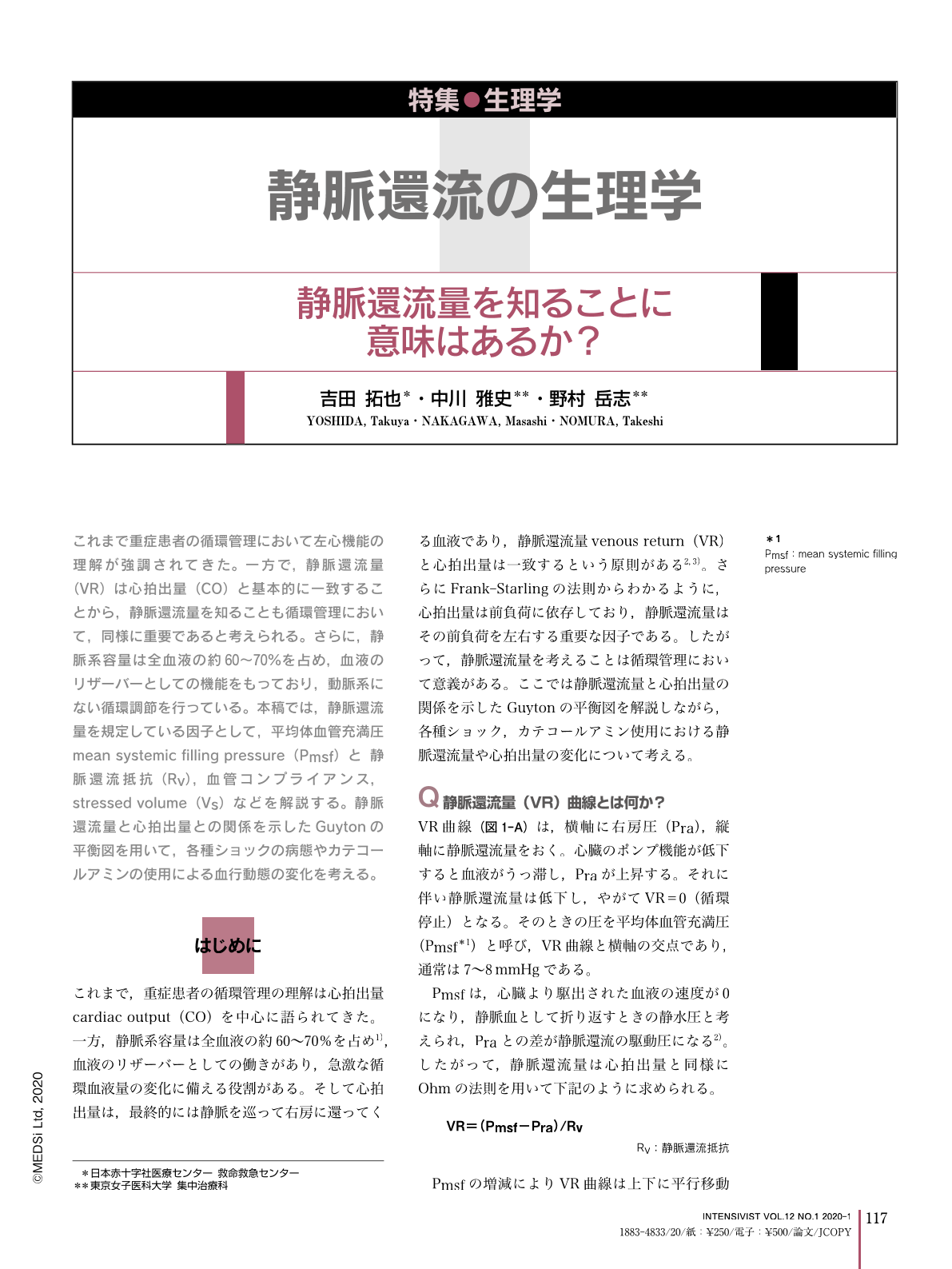Japanese
English
- 有料閲覧
- Abstract 文献概要
- 1ページ目 Look Inside
- 参考文献 Reference
- サイト内被引用 Cited by
これまで重症患者の循環管理において左心機能の理解が強調されてきた。一方で,静脈還流量(VR)は心拍出量(CO)と基本的に一致することから,静脈還流量を知ることも循環管理において,同様に重要であると考えられる。さらに,静脈系容量は全血液の約60〜70%を占め,血液のリザーバーとしての機能をもっており,動脈系にない循環調節を行っている。本稿では,静脈還流量を規定している因子として,平均体血管充満圧mean systemic filling pressure(Pmsf)と静脈還流抵抗(Rv),血管コンプライアンス,stressed volume(Vs)などを解説する。静脈還流量と心拍出量との関係を示したGuytonの平衡図を用いて,各種ショックの病態やカテコールアミンの使用による血行動態の変化を考える。
The traditional approach to understand the hemodynamic status of critically ill patients has been to focus on cardiac output. However, approximately 60-70% of the blood volume is stored in the venous system and circulating blood volume is largely regulated by the venous system. Since venous return equals cardiac output, the venous system plays an important role in cardiovascular homeostasis. We explain Guyton's equilibrium diagram and key concepts related to venous return, including systemic filling pressure and stressed volume. We show how to use the diagram to understand hemodynamic changes in various shock states and their effects on hemodynamic status by administering volume loading and catecholamines to critical ill patients.

Copyright © 2020, MEDICAL SCIENCES INTERNATIONAL, LTD. All rights reserved.


